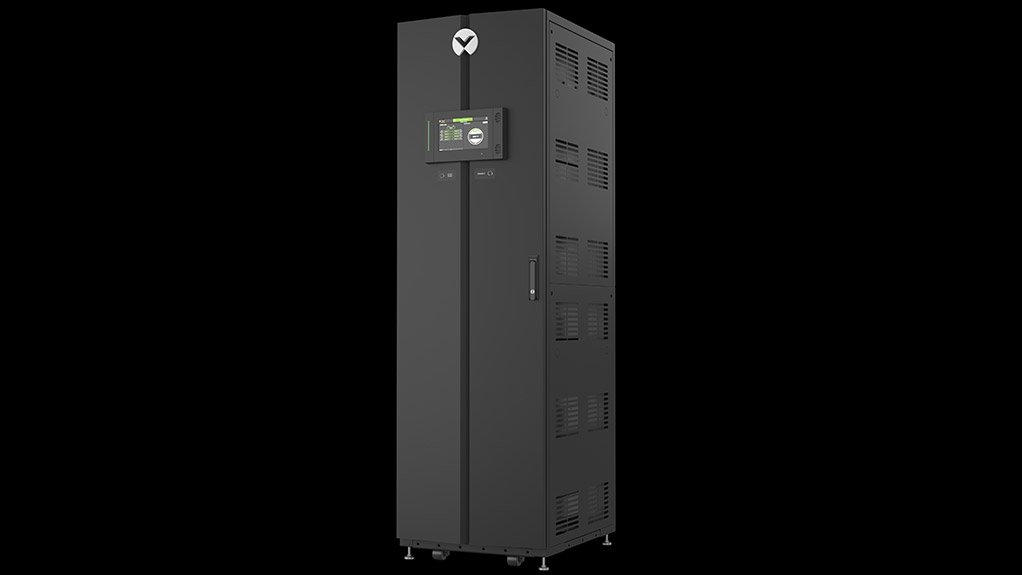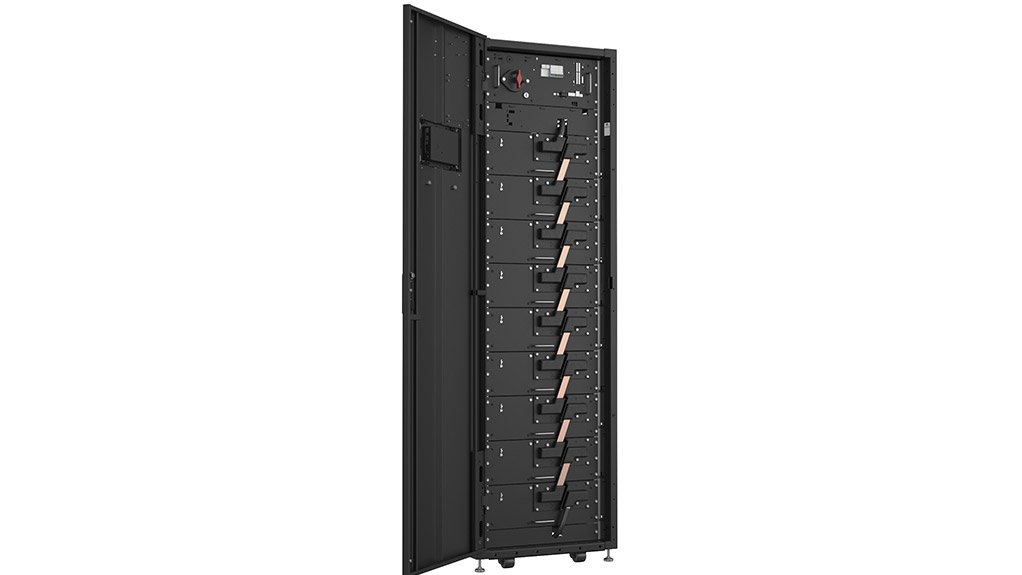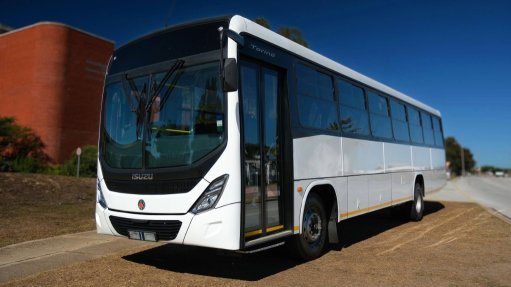Vertiv Introduces Fully Populated, High Power Density Lithium Battery Cabinets for Fast, Cost-Efficient Installation in HPC Data Centres
This article has been supplied.
Vertiv™ EnergyCore battery cabinets save floorspace with internally integrated accessories and seamlessly couple with Vertiv™ large and medium UPS systems
Meeting the urgent need for solutions supporting high-density computing in increasingly crowded data centre facilities, Vertiv (NYSE: VRT), a global provider of critical digital infrastructure and continuity solutions, today introduced Vertiv™ EnergyCore battery cabinets. Factory assembled with LFP (Lithium-Iron-Phosphate) battery modules and Vertiv’s internally-powered battery management system, Vertiv EnergyCore cabinets are available globally and are qualified for use with most current and legacy three-phase Vertiv™ uninterruptible power supply (UPS) systems, including the recently launched Vertiv™ Trinergy™.
Vertiv EnergyCore cabinets are optimised for five minutes end-of-life runtime at 263kWb per each compact, 24” wide (600mm) cabinet, and operate across a wide temperature range, making them suitable for high-density environments. Lithium batteries are more compact and lighter than VRLA alternatives, allowing users to deploy fewer battery cabinets in most applications. An internal two-hole lug eliminates the need for a conduit box, and the cabinets require no on-site external control wiring, reducing deployment time and cost compared to traditional on-site assembly. The cabinets are equipped with Vertiv’s intuitive interactive touch screen HMI display to provide visibility and control of the cabinet, operating system, and the installed batteries.
The integrated battery management system is powered by the Vertiv EnergyCore batteries, removing the requirement for an external power source and simplifying installation. It provides lifetime onboard data storage, tracking performance over battery charge-discharge cycles, service events, and enabling accurate state-of-health reports that can be used for warranty support and predictive analytics. Remote battery monitoring is available via Vertiv™ Alber™ Battery Xplorer Enterprise.
“The proliferation of artificial intelligence and other high-performance computing applications is putting a premium on the ability to deliver more power in smaller, hotter spaces,” said Milind Paranjape, vice president of energy storage at Vertiv. “With our Vertiv EnergyCore battery cabinets, we are delivering exactly what our customers and our industry need – compact, high power energy storage capable of operating safely and optimally. Simply put, these battery cabinets are designed for the emerging mission-critical needs of high-density computing environments.”
The modular design of Vertiv™ Trinergy™ allows each UPS core to be paired with dedicated Vertiv™ EnergyCore battery cabinets in a distributed architecture, enabling uninterrupted service for critical applications. Due to the power density of the Vertiv EnergyCore design, only two lithium-ion battery cabinets are needed to support each 500kW Trinergy™ UPS core, versus the three cabinets that are required by most suppliers.
Vertiv EnergyCore is UL 1973 listed and has been successfully tested for compliance to UL 9540A standard for protection against thermal runaway fire propagation in battery energy storage systems, which, according to NFPA 855 ESS installation standards, means the three feet (92cm) spacing requirements between racks can be waived by the Authorities Having Jurisdiction. This can save space and speed deployment.
Article Enquiry
Email Article
Save Article
Feedback
To advertise email advertising@creamermedia.co.za or click here
Comments
Press Office
Announcements
What's On
Subscribe to improve your user experience...
Option 1 (equivalent of R125 a month):
Receive a weekly copy of Creamer Media's Engineering News & Mining Weekly magazine
(print copy for those in South Africa and e-magazine for those outside of South Africa)
Receive daily email newsletters
Access to full search results
Access archive of magazine back copies
Access to Projects in Progress
Access to ONE Research Report of your choice in PDF format
Option 2 (equivalent of R375 a month):
All benefits from Option 1
PLUS
Access to Creamer Media's Research Channel Africa for ALL Research Reports, in PDF format, on various industrial and mining sectors
including Electricity; Water; Energy Transition; Hydrogen; Roads, Rail and Ports; Coal; Gold; Platinum; Battery Metals; etc.
Already a subscriber?
Forgotten your password?
Receive weekly copy of Creamer Media's Engineering News & Mining Weekly magazine (print copy for those in South Africa and e-magazine for those outside of South Africa)
➕
Recieve daily email newsletters
➕
Access to full search results
➕
Access archive of magazine back copies
➕
Access to Projects in Progress
➕
Access to ONE Research Report of your choice in PDF format
RESEARCH CHANNEL AFRICA
R4500 (equivalent of R375 a month)
SUBSCRIBEAll benefits from Option 1
➕
Access to Creamer Media's Research Channel Africa for ALL Research Reports on various industrial and mining sectors, in PDF format, including on:
Electricity
➕
Water
➕
Energy Transition
➕
Hydrogen
➕
Roads, Rail and Ports
➕
Coal
➕
Gold
➕
Platinum
➕
Battery Metals
➕
etc.
Receive all benefits from Option 1 or Option 2 delivered to numerous people at your company
➕
Multiple User names and Passwords for simultaneous log-ins
➕
Intranet integration access to all in your organisation























